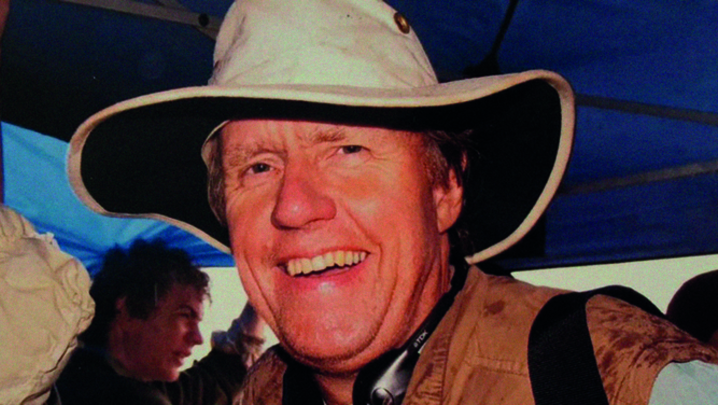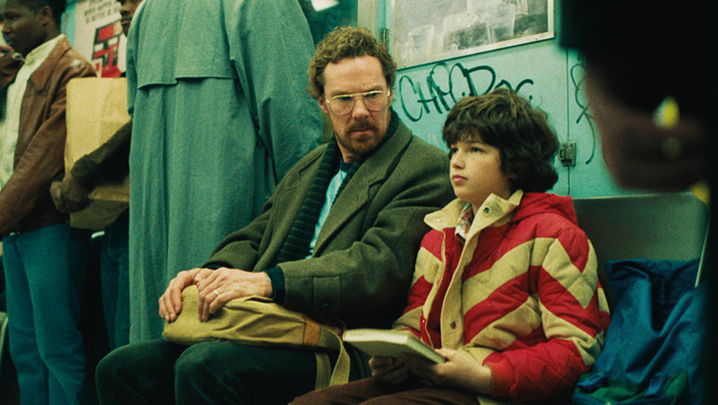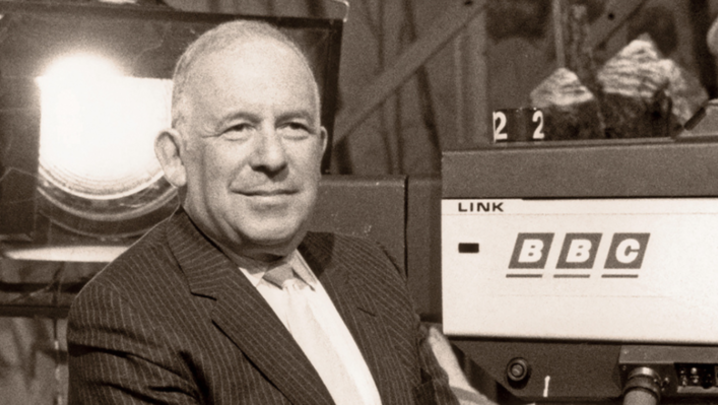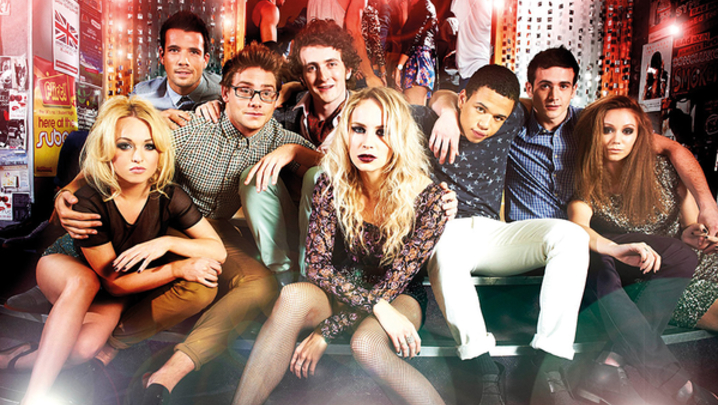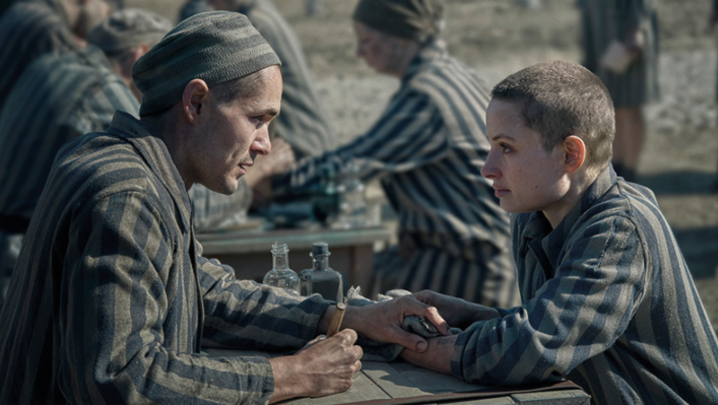Steve Clarke reports on innovations in how TV engages with autistic and neurodiverse people
Few recent TV documentaries have made as much impact as Inside Our Autistic Minds, the two-part BBC Studios film presented by Chris Packham and made in partnership with the Open University. It picked up its third major award – for Presenter of the Year – at the RTS Programme Awards in March. Previously it had won at the Griersons (taking the Science prize) and the Broadcast Awards (Specialist Factual).
For what was probably the first time ever, TV viewers were given an idea of what it is like to be autistic. In the programme, Packham gently encouraged four neurodiverse people to make a short film that aimed to show how they perceive the world.
These were brave and moving insights into a condition that Packham has dealt with all his life – his 2017 film, Asperger’s and Me, was a bold autobiographical insight into his experience – and one which autistic people were delighted to see.
Caroline Stevens, CEO of the National Autistic Society, says: “We’ve received an overwhelming response on our social media channels from autistic people and their families who saw their experiences reflected in the programme, but also from viewers who have learnt more about autism through watching it.
“This is why autistic representation on our TV screens is so important to increase understanding of autism.”
The impact of Inside Our Autistic Minds has been considerable – healthcare professionals are using it as part of their teaching and Packham says he can no longer take the train without someone approaching and congratulating him on it.
What is less well known is that the programme employed new production protocols designed to make it easier for autistic people to work in TV. The hope is that these will be shared across the TV industry and encourage others to adopt similar practices.
At the beginning of the production process the crew were trained by Access All Areas, a theatre company that specialises in shows featuring learning-disabled and autistic performers. From talking to two autistic performers at the training, Shiva Talwar, production manager on Inside Our Autistic Minds, discovered that, for people on the autistic spectrum, leaving things to the last minute may provoke bouts of anxiety.

Pilgrimage: The Road Through North Wales (credit: BBC)
Generally, call sheets are sent out only the day before a shoot. “Sometimes this can’t be helped, because you are in the hands of talent,” Talwar says. “Autistic people find this difficult to deal with because it does not give them enough time to prepare.”
Several simple changes to the production process were introduced. Call sheets were sent out no later than 48 hours in advance, something hitherto unheard of in TV or, come to that, film. Also, key decisions such as locations were made early on and stuck to.
“The contributors were the heart of this show, and we wanted them to be looked after, so we could get the best out of them,” says Talwar. “We wanted to avoid them being overwhelmed.”
Easy Read documents were devised and were tailored to be read by autistic people, providing simple and clear instructions. These are being adapted for the follow-up to Inside Our Autistic Minds, another two-part series, this time looking at people with Attention Deficit Hyperactivity Disorder (ADHD) and dyslexia. “We have learnt that there is no one size fits all,” says Talwar. Packham will again present, and the programme is likely to be ready by the autumn.
The aim is to convey what the experience is like – and to subvert any stereotypes. Packham says: “The reason we’re doing ADHD and dyslexia is because, unfortunately, those neurodiverse conditions haven’t yet reached the point of understanding that autism has.
“If you talk to people about ADHD, [they] immediately think of a hyperactive, young male who can’t focus on things and has a limited attention span. As for dyslexia, most people will say that it’s word blindness. We want to smash those stereotypes and show there is a lot more to it than that. And show what it’s like to live with these conditions.”
A “What to expect” document was created for Inside Our Autistic Minds. This provided clear information on what to expect during filming, including information on the paperwork that contributors need to deal with and advice on what to wear for filming. Talwar says: “We felt this helped to build relationships with our contributors and crew members. We had an assistant producer (AP) who was autistic. We wanted to ensure that we represented autism behind the screen as well as in front of it.
“Hearing from our contributors about what could be triggering for them was a massive learning curve for us,” he adds. “It resonated with our autistic AP. Sometimes we just accept our existing practices because that’s the way we’ve always done it.

“The AP gave us space to talk and ask us why we weren’t changing our processes. It made us think about what plausible changes we could make. We created a safe space, with ‘Wellbeing Wednesdays’, when we could check in on each other’s mental health.”
One key takeaway is that “making adjustments on the production of a TV show isn’t a sign of weakness, it’s a sign of power”, says Talwar. “Adjusting is empowering.”
He says the show was a wake-up call: “As a production manager, I’ve accepted practices from previous productions. Inside Our Autistic Minds made us ask ourselves about how we do things. We’ve launched this protocol because we know it works.
“We saw people coming to work and being empowered. Sometimes, people don’t want to do things differently because they are afraid it will cause a fuss and they won’t thrive in their jobs.”
Inside Our Autistic Minds is a landmark show and may be the first TV documentary account that films a range of authentic autistic experiences, from masking to someone who is non-verbal and highly intelligent. “We had a neurodivergent crew, an AP who was autistic and the contributors telling us what it is like to truly experience the world from the perspective of an autistic person,” says Talwar, who adds: “I think Inside Our Autistic Minds encouraged some people to get a diagnosis and find out if they are on the spectrum.”
On the broader question of representation of autistic people on TV, it does seem that a corner may have been turned. The groundbreaking drama The A Word set the bar high for a fictional account of a family coping with an autistic child. Scandi Noir thriller The Bridge presented viewers with a female lead, Saga Norén, whom audiences perceived as someone with autism. She was socially gauche but brilliant at her job as a homicide detective.
Packham wants more positive female role models on TV for those who are on the autistic spectrum. He says: “I’d like to see the normalisation of a young woman coming to terms with autism [on TV]…. Young women could then advance their diagnoses.
“Very sadly, as we saw in Inside Our Autistic Minds, fewer women are diagnosed younger; by the time they are diagnosed, they are older and they’ve had some quite significant struggles.”

Recently, we’ve watched an autistic woman, TV personality and former model Christine McGuinness, take part in BBC Two’s Pilgrimage: The Road Through North Wales. Packham says: “I watched Christine, who spent more time articulating the problems rather than the benefits [of being autistic]. That could be because of the edits and is not a criticism of her. I am ferociously against [negative portrayals of autism].”
The well-received new BBC Three comedy Dinosaur features a lead character, Nina, who is an autistic woman in her early thirties, confident and self-possessed. Nina is played by Ashley Storrie, who says: “For a show called Dinosaur about a girl with autism – and I’m on the autism spectrum – that was really cool, as there’s not a lot of opportunities for that to be showcased or for me to be me, so I just auditioned for it, got the part and then they asked, ‘Would you like to help with the writing and the creating?’ And that’s amazing – so I said: ‘Yes please!’ and now here we are.”
The BBC’s children’s commissioners continue to do outstanding work in this area: A Kind of Spark, a drama about an autistic girl who wants a memorial for the witches of her village, won the Children’s Programme category at the recent RTS Programme Awards.
Stevens says: “Many people learn about what life is like for autistic people through films and TV shows. It’s important that these depictions of autism are realistic, so people really understand the challenges autistic people face, as well as the huge contributions autistic people make to our society.
“It’s vital that TV and film companies working on stories about autism always consult with autistic people to reflect their experiences accurately.”
She adds: “We’ve seen an increase in portrayals of autistic people in TV and film over the past 10 years but, with more than 700,000 autistic people in the UK, we still need to see greater representation, especially from communities that are under-represented.”
Packham agrees that representation on TV of people with autism is unrecognisable to what it was 30 years ago.
“We’ve come a long way and made enormous strides in recent years,” he says. “Let’s remember when autism wasn’t apparent. I’m 63, so I grew up in the 1960s and 1970s, when nothing was known about autism in a broader public context. I didn’t know about it, and it led to immense difficulties in my earlier life.”



